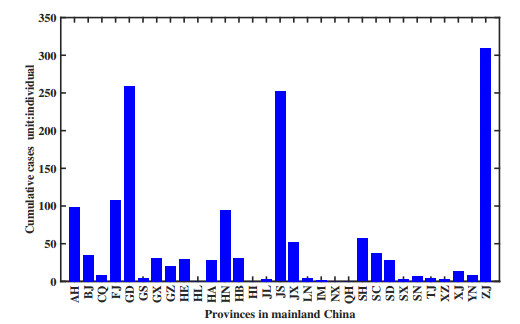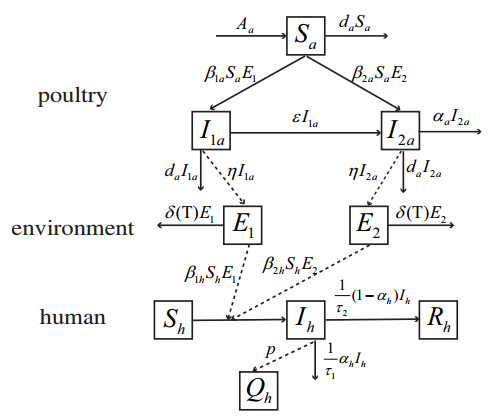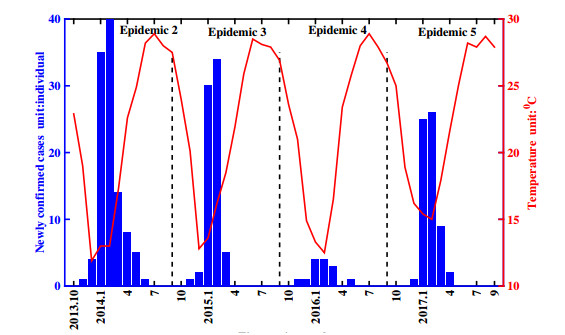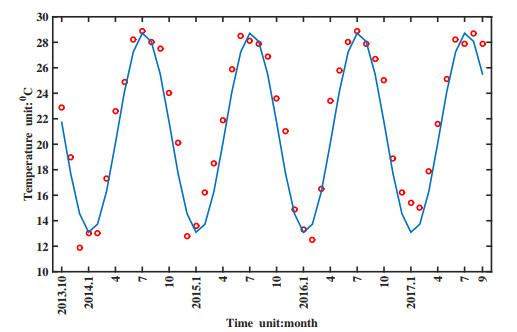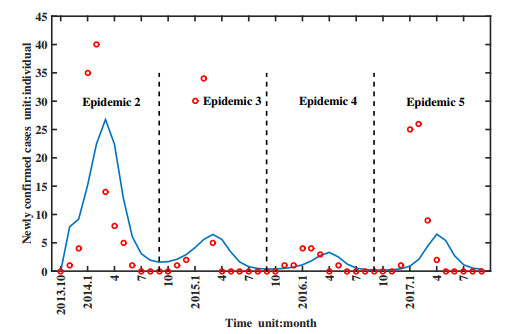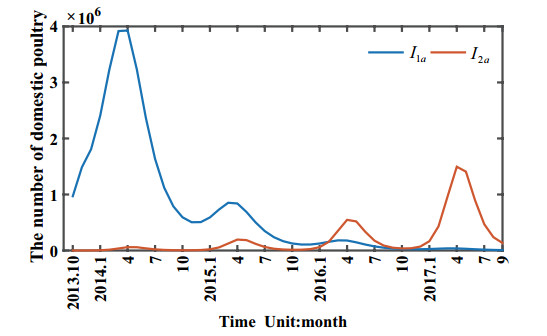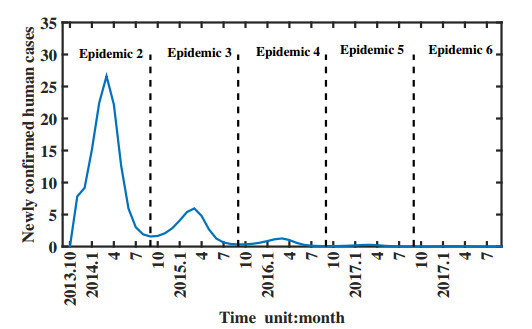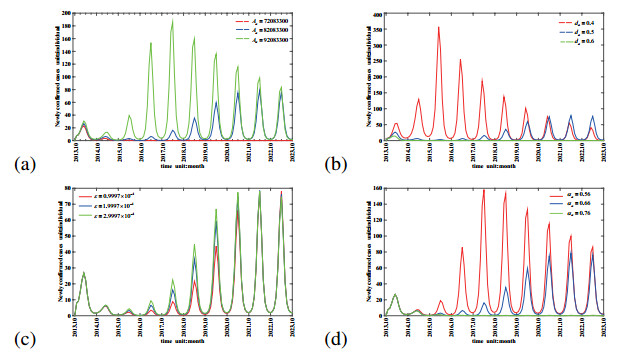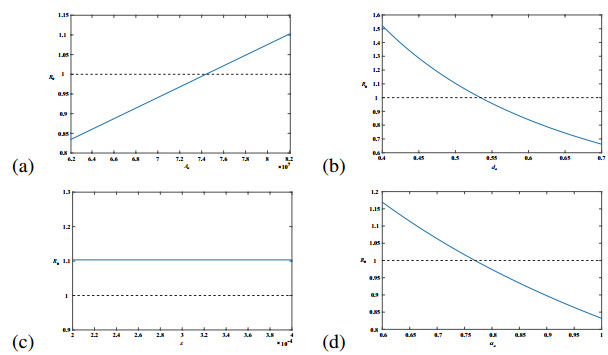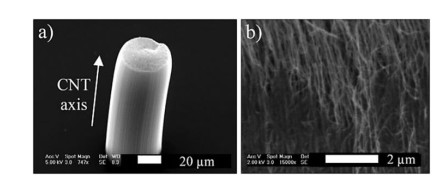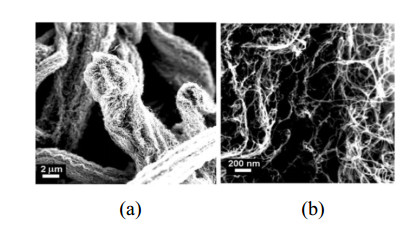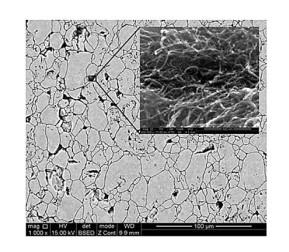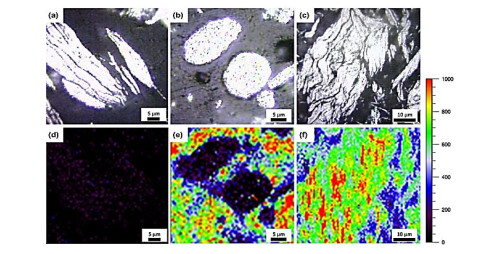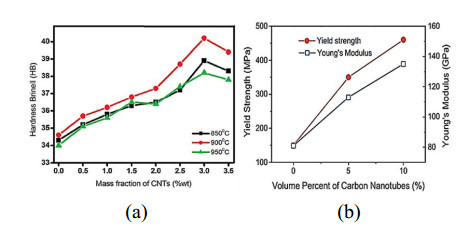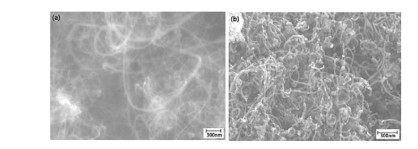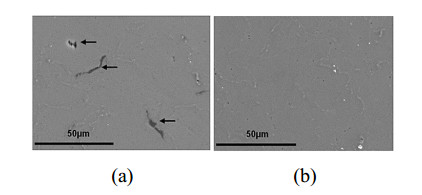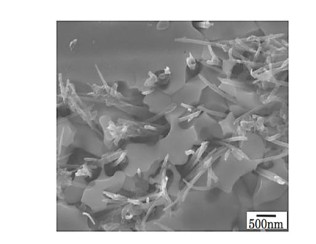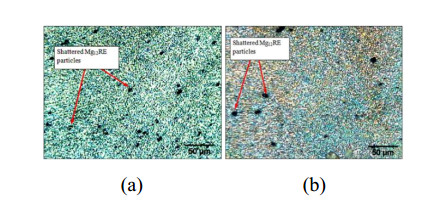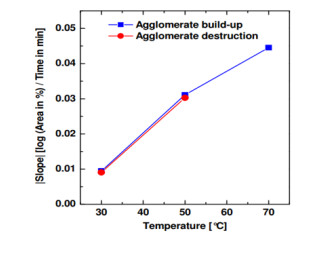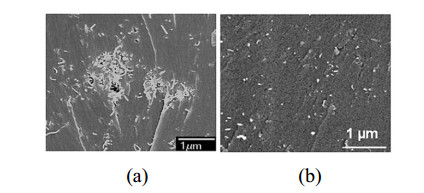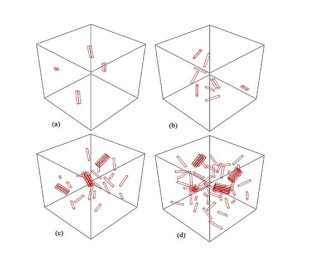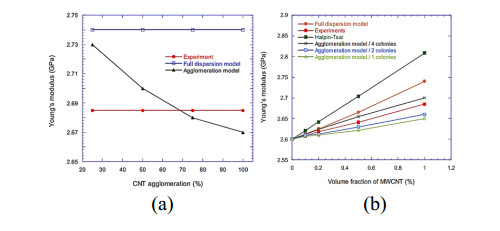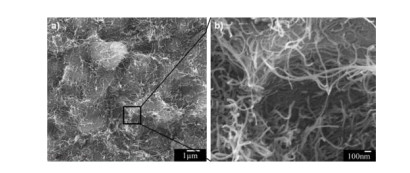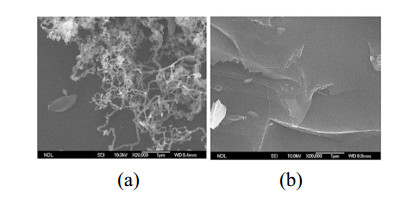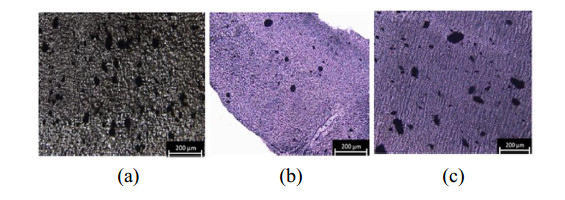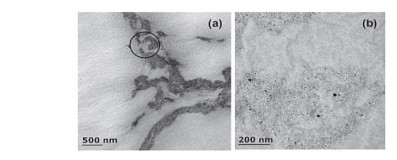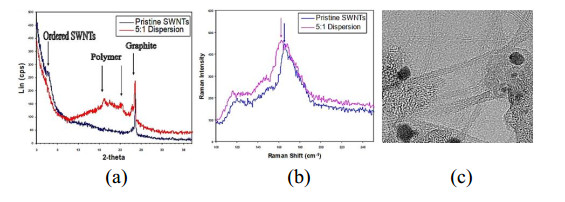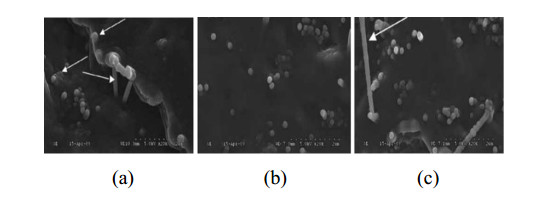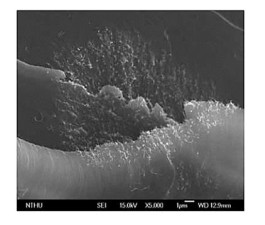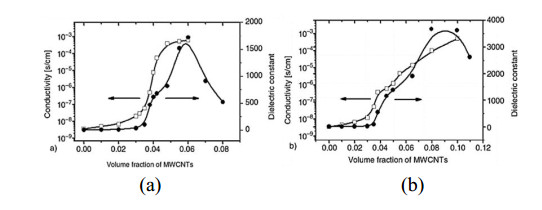Carbon nano tubes (CNTs), comprising one dimensional (1D) carbon tubes that significantly strengthen the base matrix when added as a reinforcement element. It is light in weight and very low weight fractions (vol% or wt%) of well-dispersed CNTs enhance mechanical properties effectively. Due to its poor wettability during liquid mixing, CNTs reinforced composites are mostly prepared by solid-state processing, extrusion, hot pressing, etc. after premixing of the matrix and CNTs powders in nano size. Irrespective of the production routes, matrices, and chemical treatments, CNTs agglomerate within the matrix structure. That leads to dispersion problem of CNTs in matrix materials and weaken the properties of the composites. CNTs produce small clusters/agglomerates due to their high affinity and affect the texture of grain boundaries. This review discusses the effect of CNTs agglomerations in composites formation for various CNTs reinforced composites. The study covers the effect of vol%, wt%, and dispersion medium for reinforcement.
1.
Introduction
In March 2013, the avian influenza H7N9 virus, a novel avian influenza virus, appeared in Shanghai and Anhui in mainland China, can be transmitted from domestic poultry to human beings across species isolation [1,2,3]. As of September 2018, a total of 1536 cases of human infection with avian influenza H7N9 virus, including 611 deaths, had been reported from 27 provinces in mainland China [4]. And the cases of human infection mostly occurred in winter and spring. According to the regularity, we define the epidemic situation of human infection from October 1 to September 30 every year in epidemiological statistics as each epidemic [5]. That is, the first epidemic of human infection with avian influenza H7N9 virus occurred in 2013.3-2013.9, followed by five succession epidemics in 2013.10-2014.9, 2014.10-2015.9, 2015.10-2016.9, 2016.10-2017.9, 2017.10-2018.9, respectively. Figure 1 shows time series of monthly newly confirmed cases of human infection with avian influenza H7N9 virus in mainland China from March 2013 to September 2018 according to Avian Influenza Report [4]. From Figure 1, we can see that: the number of newly confirmed cases of human infection shows a periodic and seasonal fluctuations apparently; in the fifth epidemic, the total number of confirmed cases of human infection with avian influenza H7N9 virus is close to the sum of the first four epidemics; in the sixth epidemic, almost no confirmed cases was reported.
In the first four epidemics (2013.3-2016.9), the avian influenza H7N9 virus was low pathogenicity to domestic poultry and high pathogenicity to human beings [6,7]. Domestic poultry infected with the virus had been asymptomatic, however, human beings infected with the virus usually had been fever, cough, sputum, dyspnoea, pneumonia and even death. In the fifth epidemic (2016.10-2017.9), it was found that some avian influenza H7N9 virus had insertional mutations at HA cleavage sites, which made highly pathogenic to domestic poultry and unchanged pathogenicity to human beings [8,9,10]. This may have contributed towards increased numbers of human infection in the fifth epidemic [11]. Since the autumn of 2017, reassortment avian influenza virus vaccine (H5N1 Re-8 strain + H7N9 H7-Re1 strain) had been used to immunize all domestic poultry in China [12]. This may be the reason why almost no confirmed cases of human infection was reported during the sixth epidemic in China.
Many academics have studied the transmission of avian influenza H7N9 virus by dynamical models [13,14,15,16,17]. In 2014, Juan Zhang et al. [15] established a dynamical model involving migratory bird, resident bird, domestic poultry and human beings to explore the source of avian influenza H7N9 virus in China. It was found that migratory birds are most likely the source of the transmission of virus. In 2015, Zhifei Liu et al. [16] established a dynamical model to evaluate the impact of screening and culling infected domestic poultry on the transmission of avian influenza H7N9 virus. It was found that screening and culling infected domestic poultry can effectively reduce the number of cases of the human infection with avian influenza H7N9 virus from a long-term point of view. In 2017, Yi Xing et al. [17] established a dynamical model to explore the main factor of the re-emergence of human infection with avian influenza H7N9 virus. It was found that the cycling of temperature in the environment is the main factor of the re-emergence of human infection in 2014. However, above researches did not study the impact of virus mutation on the transmission of avian influenza H7N9 virus. To investigate the influence of virus mutation and to control the transmission of the avian influenza H7N9 virus are imperative for the human health, economic development and social stability.
Existing research has found that the highly pathogenic avian influenza H7N9 virus (H7N9 HPAVI) had been prevalent in Guangdong province [18,19]. In 2018, Lan Cao et al. [20] discovered that H7N9 HPAVI appeared in the specimens of domestic poultry market in Guangzhou from 2017. Chao Li et al. [21] discovered that as of November 2018, a total of 32 cases of human infection with H7N9 HPAVI had been reported from Guangxi, Guangdong, Hunan, Inner Mongolia, Hebei, Henan, Fujian and Yunnan in mainland China, where the number of cases was 11, 9, 6, 2, 1, 1, 1 and 1, respectively. The peak time was from January 2017 to March 2017. Comparing the number of human cases infected with avian influenza H7N9 virus in provinces where human infection with H7N9 HPAIV had occurred, Guangdong province has more human cases (see Figure 2), which is conducive to improve the accuracy of data fitting. Therefore, we take Guangdong province as the research area, take domestic poultry, virus in the domestic poultry survival environment and human beings as the research objects, and establish a non-autonomous dynamical model to evaluate the effect of virus mutation on the transmission of avian influenza H7N9 virus.
The paper is organized as follows. In Section 2, we establish the transmission model of avian influenza H7N9 virus and account for the meanings and values of parameters that appeared in the model. In section 3, we give the expression of the basic reproduction number R0. In Section 4, we present the numerical simulations and estimate the value of R0. In Section 5, some sensitivity analyses of the newly confirmed cases of human infection and R0 in terms of model parameters are carried out, based on which some suggestions for control the transmission of virus among domestic poultry and from domestic poultry to human are proposed. Finally, the conclusion and discussion are summarized in Section 6.
2.
Model formulation
Before establishing the avian influenza H7N9 virus transmission model to describe the transmission mechanism, we make the following assumptions:
ⅰ: Ignoring the impact of migrant birds and resident birds on the transmission of avian influenza H7N9 virus, this paper only takes domestic poultry, virus in the domestic poultry survival environment and human beings as research objects. Migrant birds and resident birds play an important role in the transmission of the virus in the early stage of its emergence. Later, the virus has been widely spread to domestic poultry. Due to the larger raising quantity and the direct contact with human beings, the domestic poultry plays the main role in the spread of the virus. In this case, the role of migrant birds and resident birds can be negligible. So the assumption that the route of virus transmission is "Domestic poultry - Virus in the environment - Human being" is reasonable. [22].
ⅱ: The culling of domestic poultry is neglected in model. According to Official Veterinary Bulletin, although that some low pathogenic avian influenza H7N9 virus (H7N9 LPAIV) had mutated into H7N9 HPAIV in Guangdong province in 2017 and had led the culling of domestic poultry, the culling amount was very small compared to the total raising number. More, the exact number of culling domestic poultry cannot be obtained, and it is not the focus of this paper, so it is neglected in our model.
ⅲ: That temperature affects the nature decay rate of virus in the environment is considered in our model [23].
ⅳ: For domestic poultry, once infected, they will remain infectious until they are culled. According to cases of human infection, there is no report of recurrent infection case. Therefore, it is assumed that human has lifelong immunity after recovery.
ⅴ: Due to the epidemic time of human infection with avian influenza H7N9 virus is short, birth and natural death of human beings are neglected in our model.
Let Na(t) and Nh(t) be the total number of domestic poultry and human beings at time t. The poultry population is divided into three subclasses: the susceptible, the infected with H7N9 LPAIV and the infected with H7N9 HPAIV, denoted by Sa(t), I1a(t), I2a(t) at time t, respectively. The human population is also divided into three subclasses: the susceptible, the infected and the recovered, denoted by Sh(t), Ih(t), Rh(t) at time t, respectively. Since not all human infected with avian influenza H7N9 virus can be confirmed, we introduce new class Qh(t) to represent the accumulative number of confirmed cases of human infection at time t. The quantity of virus in the environment discharged by I1a(t), I2a(t), are denoted by E1(t), E2(t) at time t, respectively. The flowchart of avian influenza H7N9 virus transmission among these populations is shown in Figure 3, and the model is illustrated as the following non-autonomous ordinary differential equations (2.1):
Assuming that all parameters appeared in our model are positive. And we interpret these parameters in Table 1. Now, we will focus on explaining the nature decay rate of virus in the environment. The studies in [24] had found that avian influenza H7N9 virus appeared in 2013 originated from virus reassortants. Except HA and NA, the remaining internal genes came from avian influenza H9N2 virus. Therefore, we express the temperature-related nature decay rate of avian influenza H7N9 virus in the environment by using the nature decay rate of avian influenza H9N2 virus with temperature. The relationship is δ(T)=30⋅a⋅ebT, a=0.014, b=0.123, where T means the actual temperature of Guangdong province [25].
From China Statistical Yearbook, we take the monthly average temperature of Guangzhou, which is the provincial capital of Guangdong province, to represent that of Guangdong province. Figure 4 depicts time series of the number of newly confirmed cases of human infection and average temperature from October 2013 to September 2017 in Guangdong province. Besides, from Figure 4, we obtain the average temperature T with t periodically. Therefore, we introduce the period function T=k1+k2sin(k3(t+k4) to describe the change of temperature with time in each epidemic.
3.
Basic reproduction number R0
The first five equations are independent of the last four equations in model (2.1), so we only consider the first five equations:
According to Na(t)=Sa(t)+I1a(t)+I2a(t) at time t, we get
which yields that
Due that δ(T(t)) is continuous ω-periodic function, we can find that δL=inft∈[0,ω)δ(T(t)). Hence,
which yields that
In the same way, we can obtain that
Therefore, the feasible region of model (3.1) is
By resolving equations of model (3.1), it is easy to see that model (3.1) always has a disease-free equilibrium x0=(I1a0,I2a0,E10,E20,S0)=(0,0,0,0,Aada). Referring to the articles on periodic epidemic models [28,29], we find that the average basic reproduction number ¯R0 could underestimate or overestimate a threshold to determine whether a disease will die out or not. Therefore, we compute the basic reproduction number R0 according to the method given in [30].
Model (3.1) can be rewritten as the following form:
where x=(I1a,I2a,E1,E2,S)T,
According to literature [30], it is necessary to satisfy conditions (A1) - (A7). Obviously, conditions (A1) - (A5) are satisfied.
(A6) ρ(ΦM(ω))<1.
Let f=(f1,f2,f3,f4,f5)T, and define an 1×1 matrix
Let ΦM(t) be the monodromy matrix of the linear ω-periodic system dzdt=M(t)z, and ρ(ΦM(ω)) is the spectral radius of ΦM(ω). Obviously, conditions (A6) is satisfied.
(A7) ρ(Φ−V(ω))<1.
Only considering variable I1a, I2a, E1 and E2, we set two 4×4 matrices as follows:
Therefore, we obtain
It is easy to see that F(t) is non-negative, and −V(t) is cooperative in the sense that the off-diagonal elements are non-negative. Let Φ−V(t) be the monodromy matrix of the linear ω-periodic system dydt=−V(t)y, and ρ(Φ−V(ω)) is the spectral radius of Φ−V(ω). Obviously, conditions (A7) is satisfied.
The basic reproduction number R0 of model (3.1) is the spectrum of an operator and the general expression can be found in literature [30]. To calculate R0, we consider the following ω−periodic equation
Therefore,
According to Theorem 2.1 in literature [30], λ=R0 is the unique solution of ρ(W(ω,0,λ))=1 if R0>0. It is known that the basic reproduction number of model (3.1) is determined by λ and we calculate R0 using numerical method.
4.
Parameters estimation
We apply model (4.1) to simulate the monthly newly confirmed cases of human infection in Guangdong province and apply least-squares estimation to calculate partial parameter values which cannot be obtained easily by literature. Based on parameter values in Table 1, we can calculate the value of basic reproduction number R0 and the average basic reproduction number ¯R0.
The partial parameter values are interpreted as follows:
[A] Assuming that the total amount of domestic poultry farming is constant. In order to maintain the balance of domestic poultry in stock, monthly sold and slaughter number of poultry is generally the same as the monthly birth population. From Guangdong Statistical Yearbook, we obtain annual sold and slaughter number of domestic poultry from 2013 to 2016. Then, the average monthly sold and slaughter number can be calculated as 82083300, and it is taken as the monthly birth population of domestic poultry Aa.
[B] A domestic poultry is sold to market at about two months old. So, the sale rate of domestic poultry each month da is about 1/2.
[C] According to the Official Veterinary Bulletin, we get the infected and corresponding death number of domestic poultry infected with avian influenza H7N9 virus in mainland China in March, May, June and August 2017. By averaging them, the disease-related mortality rate αa can be obtained as 0.66.
[D] The change of the nature decay rate of avian influenza H7N9 virus in the environment with temperature is described as δ(T)=30⋅a⋅ebT, where a=0.014, b=0.123 [25].
4.1. Temperature fitting
The change of temperature with time t is described as a periodic function: T(t)=k1+k2sin(k3(t+k4)). Then, the parameter values are estimated as follows:
(ⅰ) According to Figure 4, the period of the temperature with time t is 12 months in Guangdong province. So,
(ⅱ) The mean of the highest and lowest temperature in each epidemic is used as the maximum and minimum of the periodic function. Therefore,
and hence
(ⅲ) Fitting the periodic function T(t) with the actual temperature of Guangdong province by applying the least square method, we can get k4=4.8. The fitting result is shown in Figure 5. The red dots represent the actual temperature in Guangdong province from October 2013 to September 2017 while the blue solid line represents the fitting temperature of model. Therefore, the change of temperature with time t is described as: T=20.9+7.85sin(π/6(t+4.8)).
4.2. The newly confirmed human cases fitting
We take October 2013 as the start time of simulation, apply model (4.1) to fit the newly confirmed cases of human infection with avian influenza H7N9 virus in Guangdong province from October 2013 to September 2017, and obtain values of estimated parameters as follows:
Fitting curve of the model with human cases is presented in Figure 6. As seen from Figure 6, the model we established helps explain the dynamics of historical human infection with avian influenza H7N9 virus outbreaks, which illustrates that the model is reasonable to some extent. Therefore, the model can be used to explore the transmission mechanism of avian influenza H7N9 virus that cannot be detected in practice.
By comparing the estimated values of parameters β2a and β2h with β1a and β1h, it is concluded that the transmission rate of H7N9 HPAVI to human beings is almost unchanged, but the transmission rate to domestic poultry is about 3.87 times higher of LPAVI. The parameter p=0.4868×10−4 indicates that only a small proportion of human beings infected with avian influenza H7N9 virus had been confirmed. And we can reverse that at least 5279376 human beings had been infected with avian influenza H7N9 virus in Guangdong province from March 2013 to September 2017, but most of them were not confirmed, since they had no obvious symptoms or had been cured by regarding as common cold.
In a real-world scenario, the transmission situation of avian influenza H7N9 virus among domestic poultry is not clear, and only local situations can be obtained through monitoring periodically. Using the dynamical model, we can obtain long-term trends of the epidemic situation of H7N9 LPAIV and H7N9 HPAIV with time among domestic poultry, as shown in Figure 7. From Figure 7, we conclude that the number of domestic poultry infected by H7N9 HPAIV is increasing while that infected by H7N9 LPAIV is decreasing with the development of the epidemic. From October 2013 to September 2015, H7N9 LPAIV is the prevailing strain. However, since February 2016, H7N9 HPAIV became the dominant strain among domestic poultry, and the number of infected poultry surged in the fifth epidemic, which makes it easy for researchers to detect the H7N9 HPAIV from regular monitoring.
If the virus did not mutate into be high pathogenic in 2016, the cases of human infection with avian influenza H7N9 virus would disappear in the fifth epidemic wave, as shown in Figure 8. By comparing Figure 6 and Figure 8, it is virus mutation to lead to the surge of the number of influenza H7N9 virus human cases.
4.3. Calculation of basic reproduction number
The basic reproduction number R0 is a threshold to determine whether avian influenza H7N9 virus sustains in the domestic poultry population. From Figure 9(a) and 9(b), it is ease to see that when R0<1, the number of infected domestic poultry tends to zero. In contrast, the number of infected domestic poultry tends to a periodic solution when R0>1. According to parameter values shown in Table 1, applying MATLAB, we calculate the basic reproduction number R0=1.3042>1. This indicates that avian influenza H7N9 virus in Guangdong province will persist with time under the current circumstance.
Let
the model (2) become autonomous systems. According to literature [31], we obtain the basic reproduction number
which is called the average basic reproduction number of model (2). At the same time, we calculate ¯R0=1.0712>1. It depicts that the average basic reproduction number underestimates the risk of transmission of domestic poultry.
5.
Sensitivity analysis and disease control
In this section, we discuss the influences of parameters Aa, da, ε and αa on the number of newly confirmed cases of human infection with avian influenza H7N9 virus in Figure 10. Figure 10(a) illustrates that the number of newly confirmed cases of human infection falls with the decrease of Aa. When other parameters are fixed, by decreasing the value of Aa to its 87.8%, that is 72083300, the number of newly confirmed cases of human infection can reduce 95% in February 2017. The impact of parameters da and αa on newly confirmed cases are presented in Figure 10(b) and Figure 10(d), respectively. From Figure 10(b) and Figure 10(d), we get that the number of newly confirmed cases falls with the increase of da and αa. When other parameters are fixed, by increasing the value of da to its 120%, that is 0.6, the number of cases of newly confirmed cases of human infection can reduce 99%, while the number of cases can reduce 83% with an increasing of αa to its 115%, that is 0.76 in February 2017. From Figure 10(c), we obtain that the number of newly confirmed cases falls with the decrease of ε from October 2015 to October 2021.
To reduce the risk of human infection with H7N9 avian influenza virus, we have to reduce or eliminate infections in domestic poultry. Therefore, we carry out the sensitivity analysis of parameters Aa, da, ε and αa on R0. Figure 11(a) shows that the value of R0 increases with the increasing of parameter Aa, and they have a linear relationship. When other parameters are fixed, R0<1 when Aa is less than 74383300. This indicates that breeders should minimize birth population of domestic poultry less than 74383300 to control the spread of avian influenza H7N9 virus. Figure 11(b) and Figure 11(d) illustrate that the value of R0 decreases with the increasing of parameter da and αa, and they have a non-linear relationship. When other parameters are fixed, R0<1 when da is more than 0.54 and R0<1 when αa is more than 0.77. This indicates that reducing the age of domestic poultry when they are sold to market to be less than 55 days can control the spread of avian influenza H7N9 virus among domestic poultry. It also illustrates that if the disease-related mortality rate of domestic poultry is more than 0.77, the spread of avian influenza H7N9 virus among domestic poultry can be controlled. As shown in Figure 11(c), parameter ϵ is independent of R0. In other words, reducing the birth population of domestic poultry, speeding up the circulation of poultry in the market and raising the rate of disease-related death of domestic poultry are conducive to control the transmission of the avian influenza H7N9 virus.
6.
Conclusion and discussion
The avian influenza H7N9 virus has been prevalent for six years in China. It was just low pathogenicity to domestic poultry and high pathogenicity to human beings in the first four epidemics (2013.3-2016.9). While in the fifth epidemic the virus had mutated into high pathogenicity to domestic poultry (2016.10-2017.9).
In this paper, in order to evaluate the effect of virus mutation on the transmission of avian influenza H7N9 virus, we establish a non-autonomous dynamic model to illustrate avian influenza H7N9 virus transmission among domestic poultry and from domestic poultry to human beings. Based on the newly confirmed cases of human infection with avian influenza H7N9 virus in Guangdong province from October 2013 to September 2017, we confirm the retionality of model and apply it to explore the transmission of avian influenza H7N9 virus.
According to parameter values in Table 1, we estimate the basic reproduction number R0=1.3042, which indicates that avian influenza H7N9 virus cannot disappear with time with the current circumstance. Zhifei Liu et al. [16] estimated the basic reproduction number R0 of poultry-to-poultry is 1.582 from March 18 to April 14, 2013. In a word, avian influenza H7N9 virus is still serious in these years, which impels related government departments in China to take more effective measures to control the spread of virus.
Yuhai Bi et al. [24] found that the avian influenza H7N9 virus only evolves in domestic poultry and then infects human. Hence, the main measures to prevent human infection is to control domestic poultry. Then, we perform some sensitivity analysis of the newly confirmed cases of human infection and the basic reproduction number R0 in terms of parameters occurred in our model. And, it is concluded that reducing the birth population of domestic poultry, speeding up the circulation of poultry in the market and raising the rate of disease-related death of domestic poultry are conducive to control the transmission of the avian influenza H7N9 virus. Moreover, we also give the threshold of corresponding parameters to control the spread of avian influenza H7N9 vivus, which can provide reference for related government departments.
Acknowledgments
This research is supported by the National Natural Science Foundation of China under Grants (61873154 and 11601292), Shanxi Key Laboratory Grant No. 201705D111006, Shanxi Scientific and Technology Innovation Team Grant No. 201705D131028-5 and Shanxi Science and Technology Basic Conditions Platform No. 201705D121019-4.
Conflict of interest
All authors declare no conflicts of interest regarding the publication of this paper.
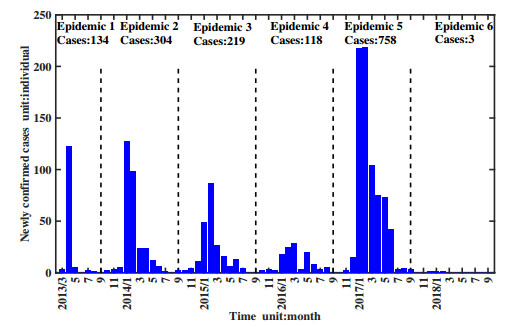









 DownLoad:
DownLoad:
